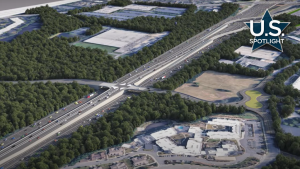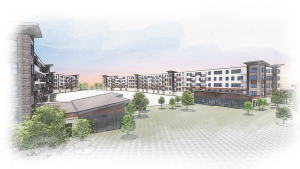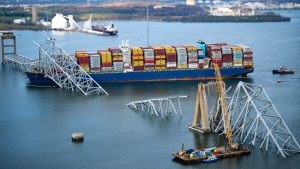The growth of Texas continues to place strain on its infrastructure.
“Texas gains about 1,000 people every day, including people moving from other states and countries in addition to newly born Texans,” says the August issue of the Governor’s Business Bulletin.
Furthermore, Texans born in the state set down roots there, resulting in Texas being the leading state for population growth over the last 17 years.
Texas does not have any personal income tax. That makes it popular for those relocating from other states, in fact ranking it as the number one destination state in America for in-migration, according to U-Haul data.
That doesn’t mean Texas is short of money. In fact, it has numerous sources of revenue. Fifty three per cent of its revenue comes from state sales taxes. There are also sizable revenues from oil and gas severance taxes, motor vehicle fuel and sales taxes, and franchise taxes collected on alcohol and land taxes.
The result is a sizeable budget surplus, $32.7 billion according to a 2022 survey conducted by the National Association of State Budget Officers. That’s bigger than the entire budgets of 24 other states in the country.
Texas is dedicating a large portion of its surplus to infrastructure, in support of the state’s continued population growth and economic expansion. Much will be focussed on roads and highways.
Texas Gov. Greg Abbott announced a 10-year, $100-billion state-wide transportation plan in February in an effort to mitigate congestion issues, maintain roads and increase safety across the state. It’s called the 2024 Unified Transportation Program (UTP).
“Under TxDOT’s 2024 Unified Transportation Program, we will dedicate critical funds to bolster our major roadway infrastructure to address the unique needs of Texans in rural, urban and metropolitan communities,” Abbot said in a media statement. “This 10-year plan will further boost our economy and keep Texas the economic juggernaut of the nation. Together, we are working to ensure that Texas remains the premier destination for people and businesses.”
Residential and economic development has been sprawling into areas outside main population centers. Even with an uncertain national economy, cities like Austin, Dallas-Fort Worth and Houston are experiencing steady business growth in their cores. The result is that increased road and highway capacity is needed for inter-city travel for both trucks and commuters.
The 2024 UTP represents a $15 billion increase over the governor’s previous 2013 roadmap. Spending plans include 32 projects totalling several billion dollars in the Austin area alone, encompassing Travis, Williamson and Caldwell counties. These include major improvements to existing key routes, such as the widening and lowering of a double decker eight-mile portion of the I-35 from U.S. Route 290 East to U.S. 290 West/State Highway 71.
Dallas area highways will also benefit from partial funding under the 2024 UTP for the state’s Clear Lanes Initiative, a Texas DOT effort to address traffic jams in the most congested metropolitan areas.
As part of this initiative, the Southeast Connector Project near Dallas-Fort Worth broke ground in late 2022. It’s a 16-mile, $1.6 billion effort to widen I-20 and I-820 and rebuild interchanges between the two freeways and Highway 287, a corridor regarded among the most congested in Texas.
The massive commitment to in-state vehicular ground transportation stands in marked contrast to the State’s refusal to financially support inter-city High Speed Rail (HSR) proposals recently laid out by Texas Central Railway and Amtrak. State Bill 977 specifically prohibits financial support of any private enterprise hoping to develop trains that travel at speeds greater than 120 mph.
The significance of the $100 billion state-wide transportation plan under the 2024 UTP is also reflected by the smaller amounts of state and federal funding, about $2 billion each, allocated to the improvement of water quality in smaller communities in rural West Texas. As reported by local media, elevated levels of fluoride, arsenic, perfluoroalkyl and polyfluoroalkyl chemicals have made the water undrinkable in parts of the region for nearly two decades, according to the Texas Commission on Environmental Quality, leaving residents to rely on bottled water.
Aging water infrastructure issues require solutions and improvements smaller communities across the state cannot afford. They also do not qualify for certain loans as they lack the financial means to repay them and often lack sufficient personnel to complete time-intensive grant applications.
Unfortunately, House Bill 2701, which would have allowed public water and wastewater utilities to join forces to save money and create efficiencies, passed in the State House but died in the Senate, leaving water quality playing second fiddle to transportation.











Recent Comments
comments for this post are closed